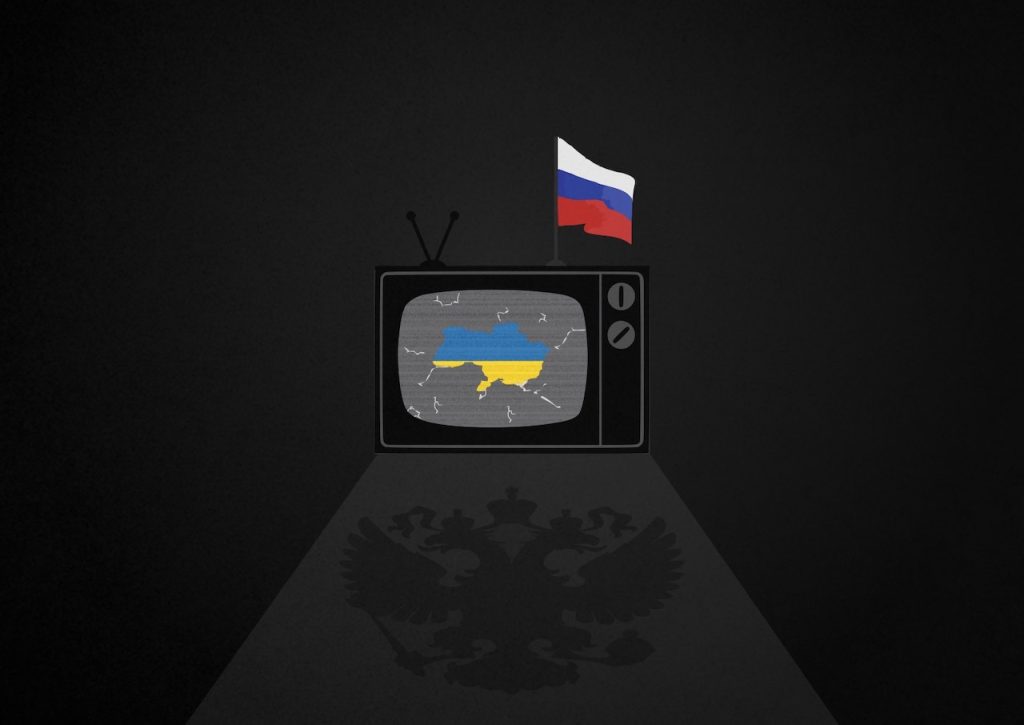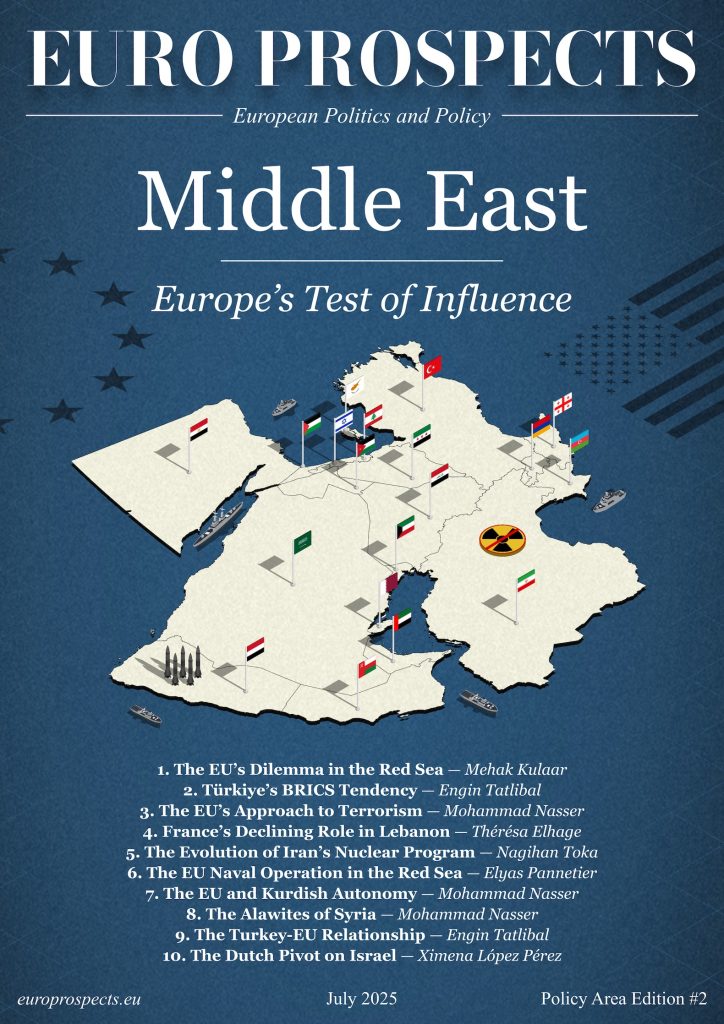10 min read — Analysis | Russia | Ukraine | Media
Inside Russian Media’s Propagandistic Coverage of the Russia-Ukraine Conflict

By Simona Kohútová — Correspondent for Slovakia
August 27, 2024 | 20:30
Though the Russia-Ukraine full scale war broke out on February 24th 2022 in areas near the Donbas region, the roots of the conflict date back to 2014 when the Russian Federation annexed Crimea, a former Ukrainian territory. There has since been heightened discourse about Russia’s biased way of interpretation of events (such as regarding the annexation or the ongoing war itself) throughout the years and the extent of its objectivity. As many critics (such as Yevgenia Albats, a Russian journalist) write, Russian mainstream media appears to be “taking into account only the political interests of the Kremlin” and therefore presents also the Russia-Ukraine war in its favor. Which, in conclusion, “blind[s]” Russian citizens and numbs their rational and objective perspective on the war, including current events and the perception of the world (primarily the West).
By downplaying or denying aggressive intentions towards Ukraine, Russia’s actions are seen as justifiable, describing them as defensive or protective. Take RT, for example, a state-funded national television (formerly Russia Today and now Rossiya 1) which provides news and analysis on global issues from a Russian perspective; or Channel One Russia (Первый канал), also a state-owned media, with the third TV channel called “NTV”. Altogether, these three channels cover 90% of the Russia’s broadcasting territory.
Russian media’s portrayal of the annexation of Crimea in 2014
For instance, during Russia’s annexation of Crimea in 2014, Russian media largely echoed the Kremlin’s perspective, framing the events as “protecting Russian interests and protecting Ukraine’s Russian-speaking population from genocide” (VOA, 2018). Russian media largely supported the action, emphasizing a narrative of Crimea historically belonging to Russia and highlighting a questionable referendum where Crimeans voted to join Russia. Though extensively criticised internationally, Russian media presented the referendum as a valid manifestation of the Crimean people’s desire to join Russia.
Russia Today (RT) even claims that Crimea chose to be a part of the Russian Federation by “joining” the federation. “RT stresses that several countries including Afghanistan and Armenia recognises the annexation, making it seem more legitimate with international recognition” (Russia Today, 2014). As if by accident, Russian media completely forgot the fact that the annexation of Crimea in 2014 violated the Budapest Memorandum of 1994, which guaranteed Ukraine’s territorial integrity in return for the removal of nuclear weapons from its territory. By their combining of selective presentation of historical facts and biased portrayal of current information, the propagandistic nature of Russian media is in full display.
Russian media’s defense of the Russia-Ukraine conflict
Russia’s stance in today’s Russia-Ukraine war as yet another depiction of Russian media bias, with outlets maintaining unconditional backing for Moscow’s position in the ongoing conflict in Eastern Ukraine. The coverage tends to highly emphasize narratives that paint the Ukrainian government as unstable or even hostile towards Russian-speaking populations, while simultaneously portraying Russia’s involvement as a necessity for the protection of the rights of these groups. The coverage continued to align with the Kremlin’s stance, emphasizing also Russia’s role in its support for separatist Russian-speaking movements in Eastern Ukraine.
As for the West, the Russian federation depicts the EU, US, and NATO as aggressors or antagonists in global affairs, depicting NATO expansion or support for pro-Western governments in former Soviet states as a direct threat to Russia’s sovereignty and ‘legitimate’ national security. As exemplary of this narrative, Russian media published Putin’s following statement: (there is) “the dictatorship of the Western elites’ of plotting ‘the overthrow of faith and traditional values’ and of practicing ‘pure Satanism’” (RUSI, 2023).
As a matter of propagandistic strategy, Bart Cammaerts and Nico Carpentier describe similar media campaigns as exemplary of an “ideological model of war”. A mechanism that essentially divides conflicting parties into categories of good and bad, making them accountable for resolving conflicts through violence.
As expected, such great lengths at propaganda have greatly influenced Russian citizens’ opinions on the ongoing war, its actors, Russia’s allies or enemies (see Putin’s “blacklist” here), and people’s thoughts on Western values.
Navalnyj and Meduza
Just like many other activists in Russia, Alexei Navalnyj, a now allegedly assassinated Kremlin critic, also possessed a webblog, when he started publishing secret information on Vladimir Putin. Shortly after Navalnyj’s newly created web, his popularity skyrocketed. Followed by his detention (as often stressed, due to political reasons), widespread protests sparked within Russia and globally as well. Navalny has been repeatedly imprisoned and eventually succumbed to a purported Putin-ordered assassination. — an example of the treatment of dissidents in Russia.
Interestingly, however, there are also traces of independent media in Russia whose coverage depicts reality differently — one of such media outlets being Meduza. Meduza tends to present various perspectives, offering detailed analysis of often-contentious issues such as the Russia-Ukraine war. It has to be noted though that state-owned and -controlled media in Russia significantly outnumber that of independent counterparts.
Propaganda and the depiction of the EU
The coverage of the Russian media regarding the war often highlights EU involvement in supporting Ukraine financially and politically, often framing it as interference in the region’s affairs. Russian media sometimes depicted the EU’s actions as undermining Russia’s national security interests or attempting to expand its influence into Russia’s traditional sphere of influence. This portrayal aimed to create a narrative of the EU being aligned against Russian interests not only in the context of the Ukraine conflict, but also in general as a hostile enemy. Since the annexation of Crimea by Russia in March 2014, political and economic sanctions and tension between Russia and Western countries has surged.
In sum, Russian media has repeatedly reported on issues in their own subjective way, undoubtedly favoring the Kremlin. Because of this, propaganda has thrived and is able to influence individuals’ ways of thinking and cause bandwagoning of people. Western media, on the other hand, has portrayed the events as a brutal annexation and an obvious start of the war.
Write and publish your own article on Euro Prospects
Subscribe to our newsletter – stay informed when we publish articles on pressing European affairs.

